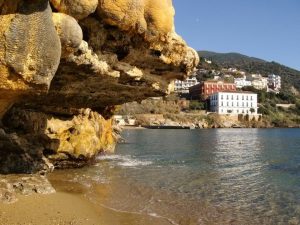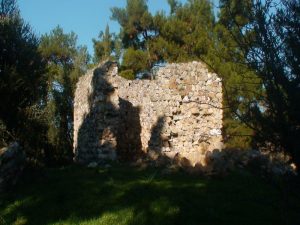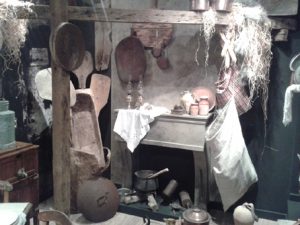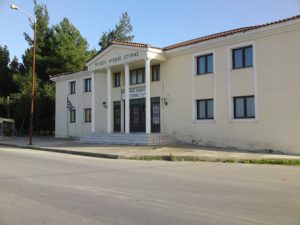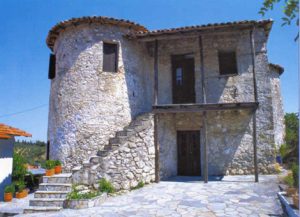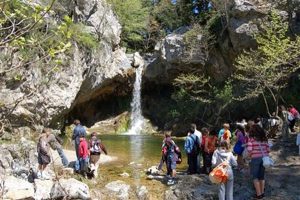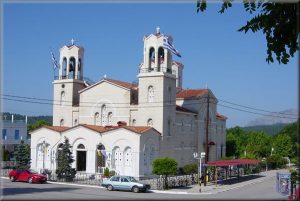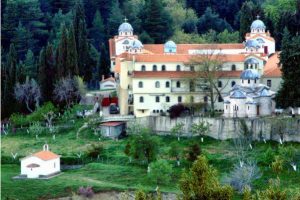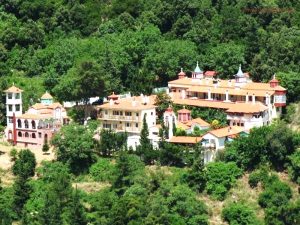
Sightseeing in Northern Evia
If you are in Edipsos, you can visit the Archaeological Collection that is displayed in a hydrotherapy room where there are many treasures that have come to light from the experts’ hoop. The Small Parliament is an institution in the Edipsos park, a contemporary speech, giving everyday color with intense conversations, where everyday problems are solved and governments are uprooted. Other sights are the old Aquarium of Agioi Anargyroi, a gem of neoclassical architecture that adorns with its presence and reminds of the seasons that the Loutropolis of Edipsos dominated the Mediterranean. Also one of the best surviving findings of the Roman period is the baths with the Cave of Sulla, which is behind the EOT hydrotherapy center.
Finally it is remarkable that the Town Hall of Edipsos, a neoclassical era, which also served as a high school and high school before becoming a Town Hall. The thermal waters of Edipsos Beach are the goddess of the region, since with their healing properties they relieve every visitor who visits them and they are located all over the southern entrance of Edipsos.
Points of interest near Edipsos …
Tower of Edipsos
An important monument of Frankish rule is preserved at Agia Paraskevi. It is a 14th-century Venetian square tower that is kept quite high. Close to it is the chapel of Agia Paraskevi which, due to its small size and its proximity to the monument of Frankish rule, the locals call it Frangoula. It is a one-storied temple but a semi-circular niche dating back to the 18th century.
Folklore Museum of Saint
The Folklore Museum of Saint was founded by the Parents and Guardians Association of the Primary School and the Kindergarten of St. To date, 80 families from the Holy and other villages have donated various items such as: Agricultural tools, household furniture and utensils, prosthetics, various coins, photographs, old original documents.
Natural History Museum
The Natural History Museum of the Istiea Hunting Association has the privilege of hosting a rare natural wealth and is considered one of the most complete museums of its kind in our country. The purpose of the museum is to contribute to the protection of forest and game wealth and the natural environment in general, through scientific activities (exhibitions, lectures and other events) of an environmental nature. One of its main goals is to educate children about the richness of Greek nature and the current dangers of devaluation of this precious national heritage.
Drosine Tower
Gouves is a historic village of North Evia. It is located on the road Istiea – Chalkida. During the Ottoman domination, the whole area was the property of Turkish boss Mohamed Ibrahim and his sister Haime Naile. In 1831 the Turks sold all their real estate to the Greek Baptist Droso and Alexander Desylas. In 1882 all the land of the village passed into the hands of its inhabitants. At the top of the village dominates the Tower, where the poet Georgios Drosinis, who has been renovated and now works as a Museum, lived. The Tower was built shortly after 1800 by Ibrahim Aga. Architect was a slave whose name was Ahmed, who then, in exchange for his services, won his freedom. Ibrahim Aga was drunk and very tough. This aspect of his character was the cause of the rumors of the tower of the Tower (any serious old towers must have their own metaphysical history). Agas, then, once raped, and in the end he slaughtered with his knife a disobedient Arab servant on the ground floor of the western turret. The traces of the blood of the unfortunate Arab remained indelible on the walls of the Tower despite attempts to clean them. Prior to the Second World War on Metaxa, the well-known Gouves fortresses were built at a strategic location in the sea area, used during the war as fortifications.
The forts were used by the German conquerors during the occupation (1941 – 1944). Today ruins of these fortifications are preserved.
Waterfalls in Drymonas
The waterfalls of Drymonas make up a place of inexhaustible natural beauty. These beautiful waterfalls are located in Evia, at an altitude of 620 meters, 4 kilometers from the Monastery of Saint David, from the road that starts from Rovies. The path between the greenery, offering peace and tranquility to the traveler. Two are the versions of how the area got its name: either from the dense oak forest surrounding it, or from the cold weather that prevails in the area during the winter months. The Forest Office of the area has created a wooden pavilion with a small exposure of local plants and fossils found in the area, with great attention and respect for the natural environment. Also, it has built with natural materials, tree trunks and ropes, bridges and supports, in order for the traveler to enjoy the unforgettable watersheds through a short travel route. The Sipi River creates an enchanting spectacle spraying its water into the dreamy waterfalls. The water drops with a crack and a momentum from a height of 15 meters into a crystal lake surrounded by rocks and forest. This overgrown lake is of great ecological value because of the dense forestland surrounding it and combines with the rare beauty of black pine trees.
Saint John the Russian
Saint John was born in Russia in 1690. At that time, Grand Peter reigned. In 1711, a war broke out with Turkey, which was also fought by St. John. The Holy One was captured and became a slave to a Turk, who transferred him to his homeland, to Prokopi in Asia Minor. The Saint accepted the unbearable oppression and humiliation of the Turks, trying to make him alter. His virtuous behavior made his master sympathize with him and leave him free to perform his religious duties. The job assigned to him was the stalling and care of animals, which he practiced with love and willingness. At the age of 40 he became seriously ill and died. On May 27, 1730, the burial ceremony took place. His master gave Christians freedom to baptize him. He was buried in the temple of St. George and his holy relic entered a marble walnut. In 1832, however, the relic was thrown out of the shrine to a bunch of woods to burn, by the Turkish troops Hatcheral Oglu Osman Pasha, who had robbed the whole temple of the tributes. But the relic remained intact. This fact frightened the Turks who had also been removed. The body of the saint was placed again in the shrine. The miracles made in the larnaca that hosts the relics of the saint become known and many people of indifferent religion resort to healing. A large pilgrimage to Cappadocia was established in 1924. During the exchange of populations in 1924, the Christian inhabitants of Prokopi of Asia Minor took with them the relic of the Saint and transported it to their new homeland, in Evia. The sacred relic was transported to Euboea in October 1924 with the vessel “Vasilios Destounis”. In 1930, a magnificent temple was founded to honor the Saint, completed in 1951.
Saint David
At the low mountains “Kavalaris†and “Xeron Mountain†opposite the village “Drymonas†is built the monastery of Saint David dedicated to the memory of the Metamorphosis of the Savior. Its location is sheltered from all the winds, which creates the conditions for its great overlapping of snow on the cold winter days. The year of the first building of the monastery is not exactly known. It is certain that it existed before 1500, when Saint David (who lived around 1550) created the Monastery on the ruins of a pre-existing temple.
Logically this pre-existing temple was destroyed by the Turks after the conquest of Evia in 1470. In 1824, the Turks destroyed it by fire and the new temple to avenge the participation of the monks in the uprising of 1821. The new rebuilding was made in 1877.
In the Temple of the Monastery, the miraculous bones of St. David the Elder are kept in a relic, as the censer and the stone of Saint, of Russian origin. A handwritten loan from Aggelis Govios is also saved, which came from Pelion and passed through the Monastery and borrowed 1000 grosia for the needs of the battle. Evageus General thanks the Monks’ Fathers and the inhabitants for their contribution to the struggle for freedom.
In the last few decades the monastery became known all over Greece for the divine abilities of a charismatic monk who lived in this place and for many years until the end of his life he was his abbot.
This is the Elder James, to whom a multitude of Divine and human interventions are attributed to relieve human suffering. In the hundred’s, there are the benefactors and faithful of the elder Jacob, who until today visit the monastery continuously and in groups in order to worship his tomb and invoke his contribution to their human small and big problems.
On weekends throughout the year, the Monastery’s precincts, as well as the foothills of the hill on which it is built, reminisce of a huge Athenian parking lot of large and small vehicles at peak times.
Monastery of St. George
The history of St. George’s Monastery is lost in the depths of the ages.
The monastery was moved to its present location, from an area just above the Baths of Edipsos. In the place where the old Monastery existed, there is today a small chapel in the name of St. George.
The location of the Monastery of the Ilia is a place of amazing beauty. The 19th century travelers refer to the many ancient relics of buildings that existed in the area, identifying the place with that of the Oracle of Selenudion, to which Strabo refers (X, 445). We do not know the precise date of the monastery.
Several scholars identify it with the monastery in the Therma region for which a Slav of Pope Innocent of the Third refers to, placing its existence already in the 12th century. Scholars, however, consider a possible date of establishment a date before the 15th century. The theory is based on the identification of the Saint George monastery with that of Aja jorgy as the Turkish admiral and traveler Piri Re`is mentions it.
The Katholikon of the Monastery is a cross-shaped temple with a dome which was hagiographed in 1727. The wood-carved temple of the temple, built in 1834, occupies the entire width of the church. In relief, billboards, and prints, angelic forms are uniquely rendered. Ichnographically it is divided into three zones. In the zone of Despotic Icons, in the area of ​​the miniatures and in the cross zone. From the Despotic icons stand out that the sacrifice of Abraham, placed in correspondence with that of the Virgin Mary, brings to mind the sacrifice of the two infants. During the Ottoman domination, the monastery suffered several disasters because of its wealth and the interest of the conquerors for it. The Turks, who last attacked the Monastery in 1821, were the cause of the destruction of many precious heirlooms and intellectual depots.
Today’s women’s Monastery of Agios Georgios of Ilia is beautiful and very interesting in terms of the heritage of the temple’s relics.
It is really worth the effort of a visit to a pilgrimage and a tour It is worth the effort of a visit for a pilgrimage and a tour. With this little text we could briefly cover our reference to this historic Monastery of Evia. But it would be disrespectful not only to our Religion but mainly to our Greek tradition if we were overwhelmingly dodging a place that preserves valuable storehouses of Hellenism.
Ancient Greece, Orthodoxy and Romiosini coexist in every inch of the site of the Monastery of Agios Georgios of the Sun. Because neither space does not allow this kind of book to be suitable for large analyzes, we refer you to the bibliography referring to the area.
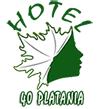
 English
English Ελληνικα
Ελληνικα